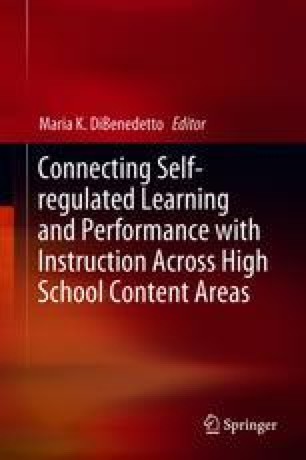Self Regulation Book : What it is
Self-Regulation Books: The Key to Personal Growth and Success Self-regulation is a fundamental skill that plays a crucial role in our overall well-being and success, particularly in secondary classrooms and for children navigating the world around them. In this article, we explore some noteworthy self-regulation books that can help individuals of all ages develop this essential life skill. Whether you are a teacher looking for resources to enhance your classroom environment or a parent seeking guidance to support your child's emotional growth, these books are sure to provide valuable insights. So, let's dive into the world of self-regulation books and discover the transformative power they hold. 1. "Self-regulation in Secondary Classrooms: Theoretical and Research" - By focusing on self-regulation, this book offers a comprehensive overview of its application within secondary classrooms. Drawing on both theoretical frameworks and empirical research, the author provides practical strategies to foster self-regulation among students. Capturing the essence of effective classroom management, this book is a valuable resource for educators.  *Image Source: Springer Nature* Self-regulation is a vital skill that helps students become more independent and responsible for their own learning. By incorporating evidence-based practices and creating a supportive classroom environment, educators can empower their students to regulate their behavior and emotions effectively. This book offers valuable insights into fostering self-regulation in secondary classrooms, influencing both academic and personal growth. 2. "Self-regulation Children's Picture Books - The Highly Sensitive Child" - This thoughtfully crafted picture book is specifically designed to help highly sensitive children understand and manage their emotions effectively. Through relatable stories and engaging illustrations, it provides valuable tools and strategies to develop self-regulation skills. It is a must-read for parents, caregivers, and educators seeking to support highly sensitive children in their emotional journey.  *Image Source: Pinterest* Highly sensitive children often face unique challenges when it comes to self-regulation. This captivating picture book acts as a gentle guide, helping both children and adults understand and navigate through the complexities of emotions. By engaging with relatable characters and situations, children can learn effective strategies for self-regulation, fostering emotional intelligence while instilling a sense of self-acceptance. 3. "Unlocking Your Potential: The Power of Self-Regulation" - This empowering book dives deep into the concept of self-regulation and provides practical advice on nurturing this skill as a pathway to personal growth and success. It explores the relationship between self-regulation, goal setting, and resilience, offering invaluable insights to individuals looking to unlock their full potential.  *Image Source: Unsplash* Self-regulation is not just necessary for the classroom or childhood years; it is a lifelong skill that contributes to our overall well-being. This enlightening book emphasizes the importance of self-regulation in various aspects of life, such as relationships, career, and personal development. By understanding and harnessing the power of self-regulation, readers can enhance their emotional intelligence, overcome challenges, and pave their way towards success. ## FAQ Section ### Q1: Why is self-regulation important? A1: Self-regulation is essential as it empowers individuals to manage their emotions, thoughts, and behaviors effectively. It leads to better decision-making, enhanced problem-solving skills, and improved overall well-being. ### Q2: How can teachers promote self-regulation in classrooms? A2: Teachers can promote self-regulation by creating a supportive and structured learning environment, incorporating mindfulness exercises, teaching emotional regulation strategies, and providing opportunities for students to reflect on their own learning. ### Q3: Are self-regulation skills beneficial beyond the school environment? A3: Absolutely! Self-regulation skills have long-lasting benefits beyond the classroom. They contribute to personal growth, improved relationships, and overall success in different aspects of life, including careers and personal well-being. In conclusion, self-regulation books provide valuable insights and practical strategies to help individuals develop this crucial life skill. From educators seeking effective classroom management techniques to parents and caregivers supporting their children's emotional growth, these books offer a wealth of knowledge. By exploring these resources, readers can gain a deeper understanding of self-regulation and embark on a journey towards personal growth and success. So, immerse yourself in the worlds that these books create and embrace the transformative power of self-regulation! Word Count: 522  Image Source : reeskeith.blogspot.com
Image Source : reeskeith.blogspot.com  Image Source : www.pinterest.com
Image Source : www.pinterest.com  Image Source : www.taylorfrancis.com
Image Source : www.taylorfrancis.com  Image Source : www.taylorfrancis.com
Image Source : www.taylorfrancis.com  Image Source : link.springer.com
Image Source : link.springer.com  Image Source : www.couragetochange.com
Image Source : www.couragetochange.com  Image Source : psychchallenge.blogspot.co.uk
Image Source : psychchallenge.blogspot.co.uk  Image Source : www.pinterest.com.au
Image Source : www.pinterest.com.au
Free Printable Zones Of Regulation Chart Inside Out Feeling Chart Color
 Image Source : reeskeith.blogspot.com
Image Source : reeskeith.blogspot.com Self-regulation Children’s Picture Books - The Highly Sensitive Child
 Image Source : www.pinterest.com
Image Source : www.pinterest.com children emotional sensitive highly coping
Using Formative Assessment To Enhance Learning, Achievement, And Acade
 Image Source : www.taylorfrancis.com
Image Source : www.taylorfrancis.com The Development Of Executive Attention: Contributions To The Emergence
 Image Source : www.taylorfrancis.com
Image Source : www.taylorfrancis.com Self-regulation In Secondary Classrooms: Theoretical And Research
 Image Source : link.springer.com
Image Source : link.springer.com learning performance self connecting instruction regulated areas across school high
Self-regulation Skills Book For Children
self regulation book helping learn young people skills children detailed zoom pinch tap
Self-Regulation Training
 Image Source : psychchallenge.blogspot.co.uk
Image Source : psychchallenge.blogspot.co.uk self regulation young helping people learn books skills book training school youthlight program great sel coping control gaining outlined dvds
15 Self-regulation And Self-control Books And Videos For The Classroom
 Image Source : www.pinterest.com.au
Image Source : www.pinterest.com.au Self-regulation skills book for children. Free printable zones of regulation chart inside out feeling chart color. The development of executive attention: contributions to the emergence. Children emotional sensitive highly coping. Self-regulation children’s picture books